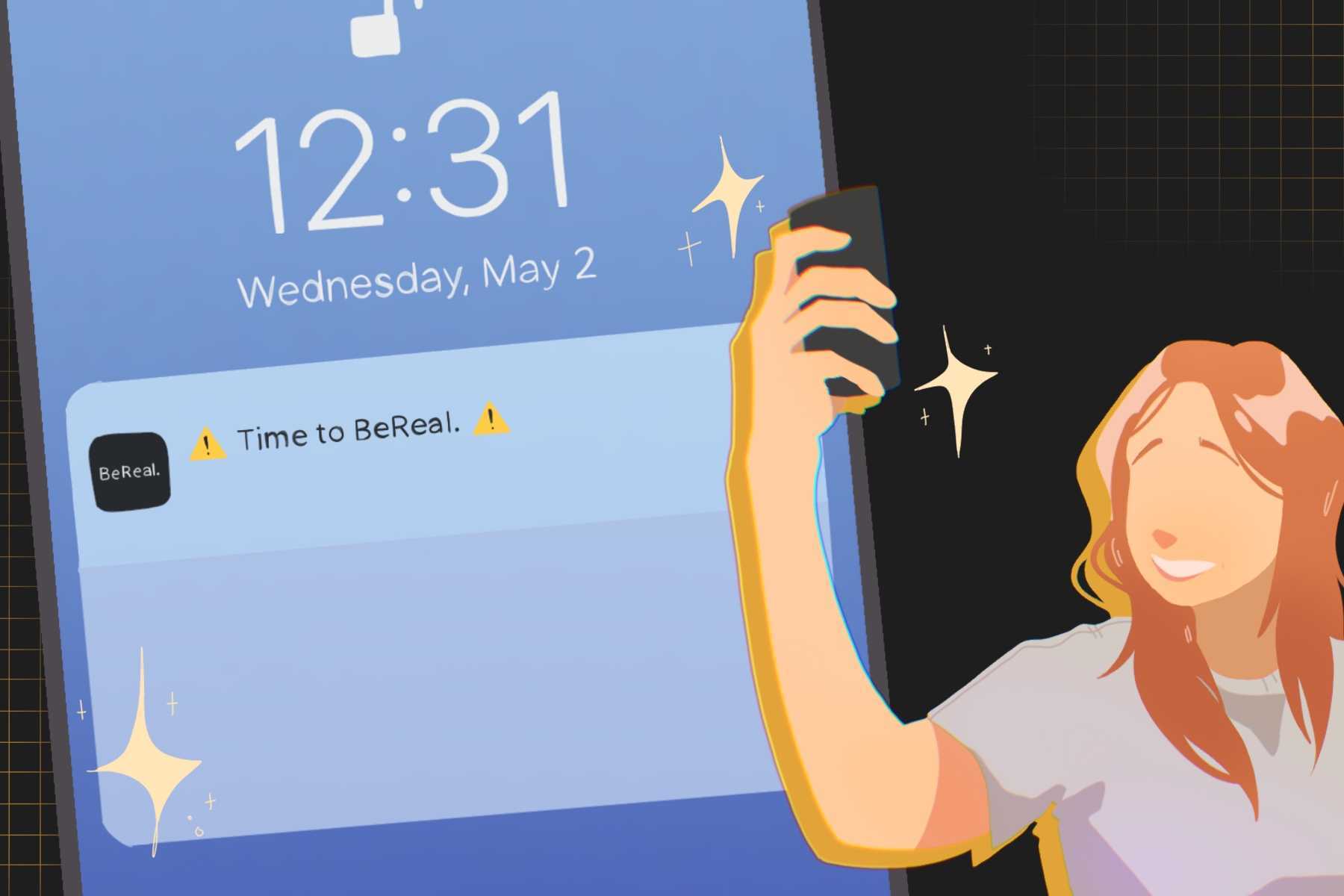When Instagram first became popular, it also became a highlight reel of an individual’s best moments. More recently, however, the platform has tried to become more “casual,” normalizing candid photos and photo dumps where anything goes. A new popular app, BeReal, is an extension of the same idea, asking users to post precisely what they are doing at a random moment without the opportunity to alter anything later. Since its launch, the app has grown tremendously and it reveals our fascination with honest, constant sharing. How is BeReal similar to other media platforms, and what elements contribute to its popularity?
The term “social media” gets thrown around often and its meaning largely varies with context; it can be hard to encompass in one definition. However, a simplified version describes it as the “forms of electronic communication through which users create online communities to share information, ideas, personal messages, and other content.” When the major social media platforms first appeared, they all valued sharing relatively unembellished content about everyday life. What you had for lunch that day, photos of family events, mirror selfies, and simple daily thoughts all had their place on Facebook status updates or Instagram pictures.
Social media was an extension of your authentic self that could easily reach a wider audience. Generally speaking, social media still encourages you to share information about your life at a rapid rate. In June 2017, Snapchat announced a “Snap Map” feature that allows you to view your friends’ locations in real time. The “Snap Map” feature is one of the countless examples of how social media is integral to the digital identity we create. Constant updates about the whereabouts or happenings in our lives is expected, or at the very least, not out of the ordinary.
To understand current social media trends, one can use Instagram as a guidepost. When the platform started to gain more traction, it formed the idea of an “Instagram-worthy photo” and even coined the phrase “do it for the ‘gram.” It soon became standard to differentiate between good and bad photos, and filters, poses and perfectly constructed captions soon became the norm. Attending events or dressing a certain way specifically to take Instagram photos was normalized; Instagram became a competition.
Over a decade of thousands of daily posts, the posed and manufactured posting on Instagram began leaving many followers unimpressed and sick of the platform. Followers also began to criticize new features such as the online shopping page and video reel pages. The new features made Instagram no longer feel like fun but rather a large, targeted, inauthentic advertisement or platform. Additionally, the addition of a video reel page was an attempt to appeal to fans of TikTok, which many dubbed a more entertaining and less stressful app than Instagram.
In 2020, Instagram began to see its values change once more, transforming from a place to create the perfect picture to the host of a new movement to “make Instagram casual again.” The goal of a casual Instagram is to look as effortless and likable as possible, no matter how much deliberate effort it took. Does this sound contradictory? That’s because it is, as the idea of a casual Instagram seems impossible to many app users. However, many users still post more offhand and unedited content without much thought, using the new trends to connect with others in a more transparent way.
The primary goal of a casual Instagram, though, is still to highlight a desirable or “best” version of yourself. Regardless, posts and pictures that would have been out of place a few years ago are now all over Instagram’s feed, whether from everyday posters or big-time influencers.
One of the most prominent features of a “casual Instagram” is the “photo dump.” The structure of a photo dump is simple: The owner of the account posts many pictures at once, either with a unifying theme or just a set of photos clumped together randomly. Conglomerates of sunset pictures, selfies, flowers, windows, blurry group photos, food — anything is fair game for a photo dump. They allow images that would otherwise seem unremarkable or too random in a post by themselves to seem significant. Like a digital scrapbook, the photo dump gives creators the opportunity for creativity that appeals to Instagram users.
While several social media platforms always had the option to upload multiple photos at once, the “photo dump” post was particularly popular in the prime of Facebook and MySpace. The practice has since been revived on Instagram, where the trend appeals to younger audiences who want to appear as effortlessly cool as possible. To finish any masterful photo dump, use a simple, quick caption to complete the feel. The practice signaled a shift in social media — posed and planned pictures were “out,” and candid content was “in.”
The shift back to the more authentic origins of social media paved a path for the app BeReal to take off in popularity. BeReal is based on a simple premise: Post exactly what you are doing when the app tells you. At a random moment in the day, a BeReal user will receive a notification that they have a two-minute window to post a photo, which captures an image from both your front-facing and rear-facing camera. Users can post outside the allotted two minutes; however, the picture will be labeled “late.”
The app lets you see exactly what your friends were up to when they didn’t expect to post on social media, making it harder to plan or alter their image. BeReal has been dubbed the “anti-Instagram,” a platform that celebrates authenticity by not providing many other options such as filters or editing. Similar to “Snap Map,” BeReal also includes a location feature. This summer, BeReal reached over 10 million daily users, and it only appears to be gaining attention.
As is typical of social media, other platforms are following the lead of the newest popular app. Instagram is working on an “IG Candid” feature that will likely use the same features of BeReal, furthering the idea of a “casual Instagram.” The app inspired many online memes, and even large companies or brands comically use the BeReal format to promote their products. BeReal has quickly swept over the social media scene.
Many social media users wonder if this authentic, inauthentic, and authentic cycle will continue after BeReal’s popularity plateaus. However, given the widespread love for the app and its ability to connect people in a clearly desirable way, BeReal may be able to break the cycle and prevent the return of inauthentic social media. Regardless of the outcome, countless users express themselves authentically in ways that social media was originally intended to facilitate, on the beloved BeReal and elsewhere.

















